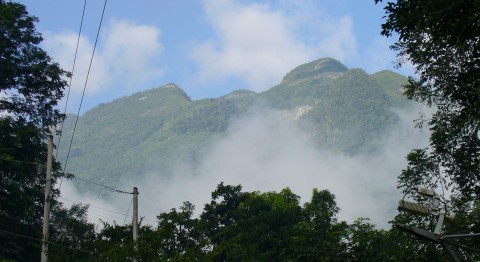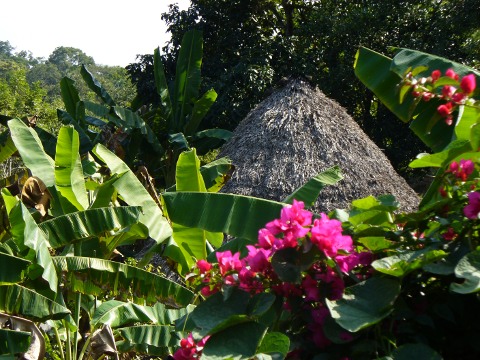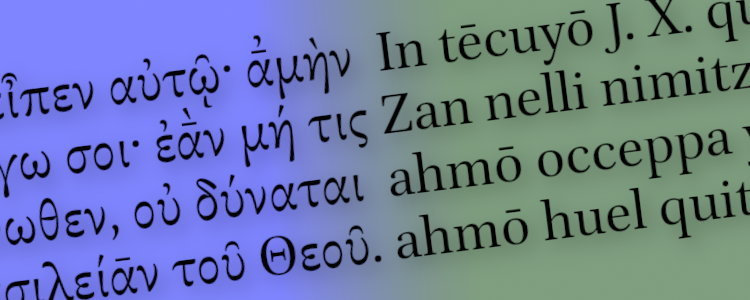There was a time, not so long ago, when I fancied myself somewhat of an expert in the ancient Greek language. I learned the Greek alphabet shortly after learning the Roman one, and throughout childhood I studied the language slowly but surely. Upon arriving at university, the Greek professors graciously allowed me to test out of the first year of Greek, which is how I ended up taking Greek 3 during my first semester, and went on to take every Greek class that was available. So imagine my surprise, when, after all those years of acquainting myself with the language, for the first time I recently came across the fact that ancient Greek has phonemic vowel length. I had a foggy notion of Eta and Omega being “long” vowels and Epsilon and Omicron being “short” vowels, but I had chalked it up to being a weak attempt at explaining how they should be pronounced, something akin to how in my native English they say that the A in “apple” is short, whereas the “A” in “acorn” is long. Phonologically speaking, the difference between these two is a difference in quality, not quantity—in fact, the A in “acorn” is a diphthong; not even a simple vowel!
Read MoreCategory: Mexico
How to buy a car in Mexico with cash
I am a US citizen living in Mexico as a temporary resident, and after going through quite an ordeal trying to buy a vehicle here, I thought I would share what I learned in case someone else in a similar situation is about to go through the same process.
First of all, I use TransferWise to move money from my US bank account to my Mexican bank account, and when I found a vehicle I wanted to buy, I thought I had all my ducks in a row. I live in a fairly small town, so when I went to the big city to buy a car, I just located the nearest branch of my bank and told the seller to meet me there.
Read MoreNahuatl Mission Accomplished

Another language mission has come to a close: Conversational Nahuatl in Four Months!
I was travelling in a Nahuatl-speaking part of Mexico during the last week of November, and based on how well I met my goals, I would say it was a success. I wasn’t too sure before the trip–my plans to speak Nahuatl with my neighbours every other day fell apart as more pressing duties commandeered my time, but nevertheless I can say that my experience in Mexico was very much enhanced by my speaking Nahuatl.
One of my goals was to preach a sermon in Nahuatl, and that was accomplished in La Soledad, Mpio. Tamazunchale, S.L.P. I relied quite a bit on my outline and notes, but when I think about it, it was comparable to the first time I preached in Spanish, and I believe that the message from God’s word was heard and understood.
I had a few minor goals as well, and one was not met, but the main one, although nebulous, was to be able to speak Nahuatl at a “conversational level.” I define this as being able to carry a conversation beyond “Hi, how are you?” I did this, and I was able to visit with several elderly people in Nahuatl. Although I did not understand everything they said, it was enough to carry on the conversation. Some of these people spoke very little Spanish, and all of them were more comfortable speaking Nahuatl, so I say that that part of the mission was accomplished. Read More
Back from Mexico

I have returned from the land of banana trees and iridescent butterflies, the land of the Huastec and Nahuatl-speaking Indians, and I am happy to report that the trip went very well, and that my father and I have returned home safely. If you’ve been watching the news lately, you’ll surely know that there’s quite a bit of conflict going on along the border of Mexico right now, and although we did see some drug cartel members along the highway in northern Tamaulipas, we got past unscathed, knowing that God was with us the whole time (although it is rather disturbing to see people with guns in Mexico who are neither military or police). As for the Huasteca Potosina, the area where we spent the week, things are much more peaceful there.
As always, a week was not enough, but I was just thankful that I was able to return there again after two and a half years absence. It was a time of renewing old friendships and making new ones, and I was also able to practice speaking Nahuatl. Most of my attempts at carrying on a conversation ended when the person with whom I was speaking uttered a sentence that went past my ears uncomprehended, and then I would resort to Spanish. I probably could have done better, but I am pleased with my progress, and of course everyone was tickled pink that I was learning their language. The Huastec dialect remains a mystery to me, but as we met a good number of Huastec people on this trip, they endeavoured to teach me some of their language as well. It is a Mayan language, entirely different from Nahuatl, and it has a very unique sound, full of glottal stops and ejective consonants. Read More
Hymn of the Week – Sagrado es el amor
We sang this hymn (the Spanish version of “Blest Be the Tie That Binds”) with the church at Lejem in the Huasteca Potosina this past week. I thought it was very appropriate, as we were Christian family, even though this was the first time I had met many of them.
Sagrado es el amor
Que nos ha unido aquí,
A los que creemos del Señor
La voz que llama a sí.A nuestro Padre Dios
Roguemos con fervor,
Alúmbrenos la misma luz,
Nos una el mismo amor.Nos vamos a ausentar,
Mas nuestra firme unión
Jamás podráse quebrantar,
Por la separación.Un día en la eternidad
Nos hemos de reunir,
Que Dios nos lo conceda, hará,
El férvido pedir.
